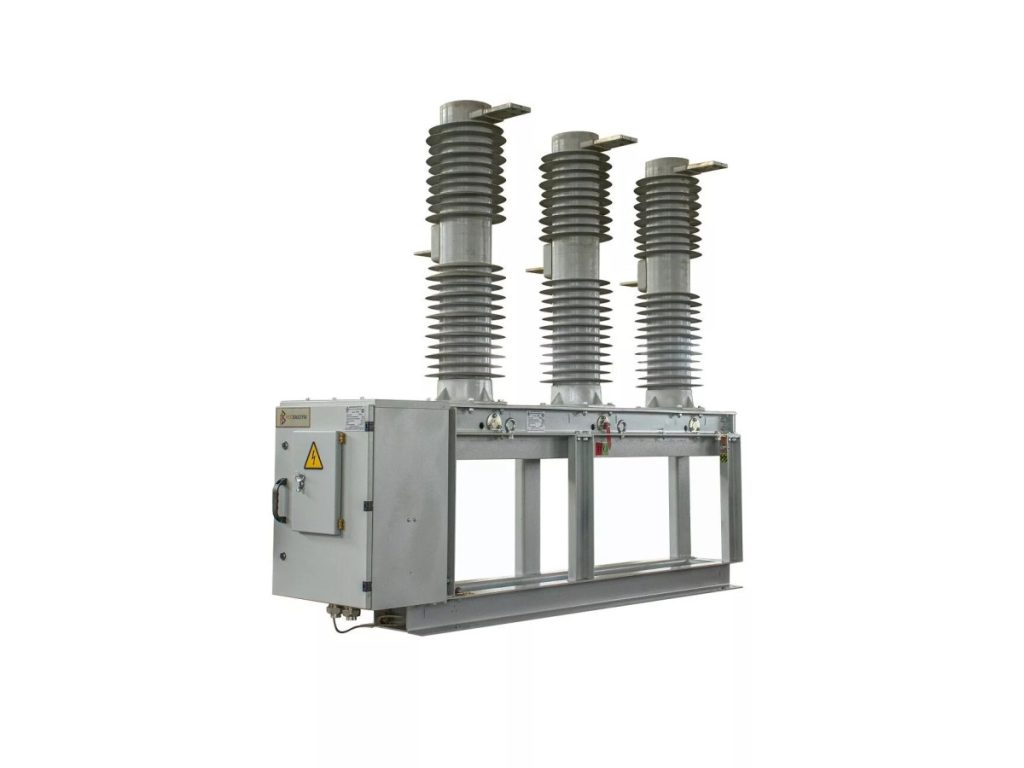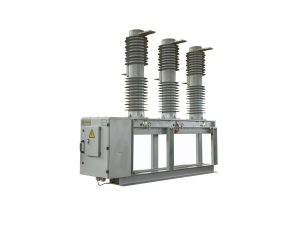Understanding Vacuum Circuit Breaker Operating Mechanisms

Introduction to Vacuum Circuit Breaker Technology
A vacuum circuit breaker is a vital component in modern electrical systems. It is designed to interrupt and isolate electrical faults to protect equipment and ensure system reliability. The name ” Vacuum circuit breaker” originates from the use of a vacuum as the arc-quenching medium. This technology has become increasingly popular due to its reliability, compact design, and minimal maintenance requirements. In medium-voltage applications, the vacuum circuit breaker has largely replaced older technologies such as oil and air circuit breakers.
Basic Working Principle of a Vacuum Circuit Breaker
The vacuum circuit breaker operates on a simple yet efficient principle. When a fault occurs in the electrical system, the breaker contacts open, and an arc is formed between them. The arc is quickly extinguished within the vacuum chamber. The vacuum provides an environment with extremely low pressure, preventing ionization and allowing for rapid arc extinction. As the contacts separate, metal vapors condense back onto the contact surface, restoring dielectric strength almost instantly. This enables the vacuum circuit breaker to interrupt fault currents safely and efficiently.
Components of a Vacuum Circuit Breaker
A vacuum circuit breaker consists of several essential components, each serving a specific purpose:
1. Vacuum Interrupter
The vacuum interrupter is the heart of the vacuum circuit breaker. It contains the fixed and moving contacts enclosed in a sealed vacuum chamber. When the contacts separate, the arc is formed and extinguished within this chamber.
2. Operating Mechanism
The operating mechanism provides the mechanical force required to open and close the contacts of the vacuum circuit breaker. It can be manual, spring-operated, or motor-driven, depending on the design and application.
3. Insulation and Enclosure
High-quality insulation materials are used to isolate the live parts of the vacuum circuit breaker from the grounded frame. The enclosure provides structural support and protection from environmental conditions.
4. Control and Auxiliary Circuits
Control circuits manage the automatic operation of the vacuum circuit breaker, while auxiliary circuits handle signaling, interlocking, and monitoring functions.
Operating Mechanisms of a Vacuum Circuit Breaker
The vacuum circuit breaker uses an operating mechanism that converts stored mechanical energy into motion to open or close the contacts. This mechanism plays a crucial role in determining the speed, reliability, and longevity of the breaker.
Spring Operated Mechanism
In many vacuum circuit breakers, a spring-operated mechanism is used. The spring is charged either manually or electrically and released to move the contacts. The stored energy ensures fast operation and consistent performance.
Magnetic Actuator Mechanism
Some modern vacuum circuit breakers use a magnetic actuator mechanism. This design employs electromagnetic force to open and close the contacts, offering precise control and reduced mechanical wear.
Motor-Driven Mechanism
In large installations, the vacuum circuit breaker may use a motor-driven mechanism. The motor continuously charges the operating spring, ensuring that the breaker is always ready for the next operation cycle.
Advantages of a Vacuum Circuit Breaker
The vacuum circuit breaker offers numerous advantages over conventional types, making it a preferred choice for many electrical systems.
- High Reliability: The sealed vacuum interrupter ensures long service life with minimal maintenance.
- Compact Design: The vacuum circuit breaker is smaller and lighter compared to other breakers.
- Fast Arc Extinction: The vacuum environment ensures rapid arc extinction, reducing damage to contacts.
- Low Maintenance: With fewer moving parts and no need for gas or oil, the vacuum circuit breaker requires minimal upkeep.
- Environmental Safety: The vacuum circuit breaker is free from greenhouse gases, making it an eco-friendly option.
- High Dielectric Strength: The vacuum provides excellent insulation properties, ensuring safe operation under high voltages.
Applications of a Vacuum Circuit Breaker
The vacuum circuit breaker is widely used in medium-voltage applications, typically ranging from 3.3 kV to 36 kV. It is commonly employed in:
- Power generation stations
- Distribution substations
- Industrial plants
- Railway systems
- Commercial buildings
In all these applications, the vacuum circuit breaker ensures reliable fault interruption and system protection.
Maintenance of a Vacuum Circuit Breaker
Although the vacuum circuit breaker is known for low maintenance, regular inspections are still essential. Periodic testing of contact resistance, mechanical operation, and insulation integrity ensures continued reliability. Visual inspection of operating mechanisms and lubrication of moving parts further enhance the performance of the vacuum circuit breaker.
Comparison with Other Circuit Breakers
Compared to oil and air circuit breakers, the vacuum circuit breaker offers several superior characteristics. It has no fire risk, requires less maintenance, and provides faster switching. Unlike SF6 circuit breakers, the vacuum circuit breaker does not use any greenhouse gases, making it environmentally sustainable. Its overall lifecycle cost is lower due to minimal replacement and servicing requirements.
Future of Vacuum Circuit Breaker Technology
The vacuum circuit breaker continues to evolve with technological advancements. Modern designs are more compact, energy-efficient, and equipped with intelligent monitoring systems. The integration of digital sensors allows real-time diagnostics and predictive maintenance. As the demand for reliable and sustainable power systems grows, the vacuum circuit breaker will remain a key technology in the electrical industry.
Conclusion
In conclusion, the vacuum circuit breaker plays an indispensable role in ensuring the safety and reliability of electrical systems. Its efficient operating mechanisms, minimal maintenance requirements, and environmental benefits make it a superior choice over traditional circuit breakers. As technology advances, the vacuum circuit breaker will continue to be the cornerstone of modern electrical protection systems.




